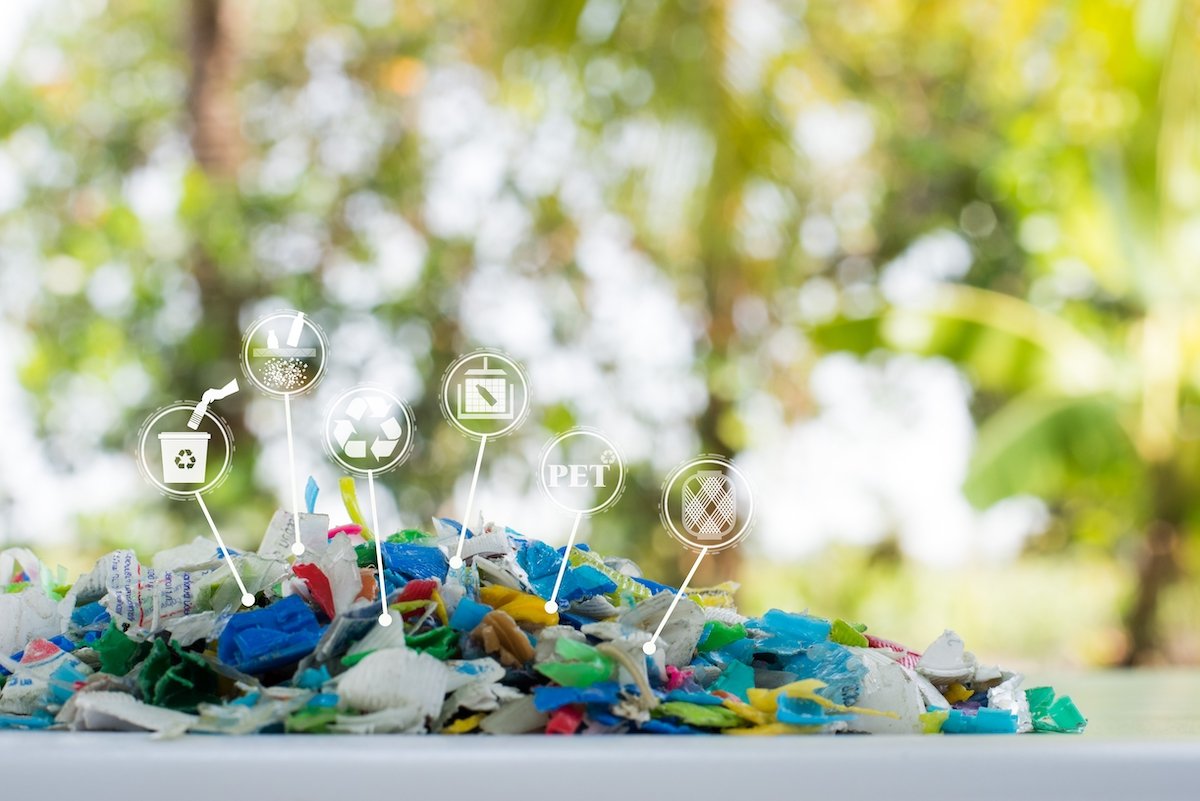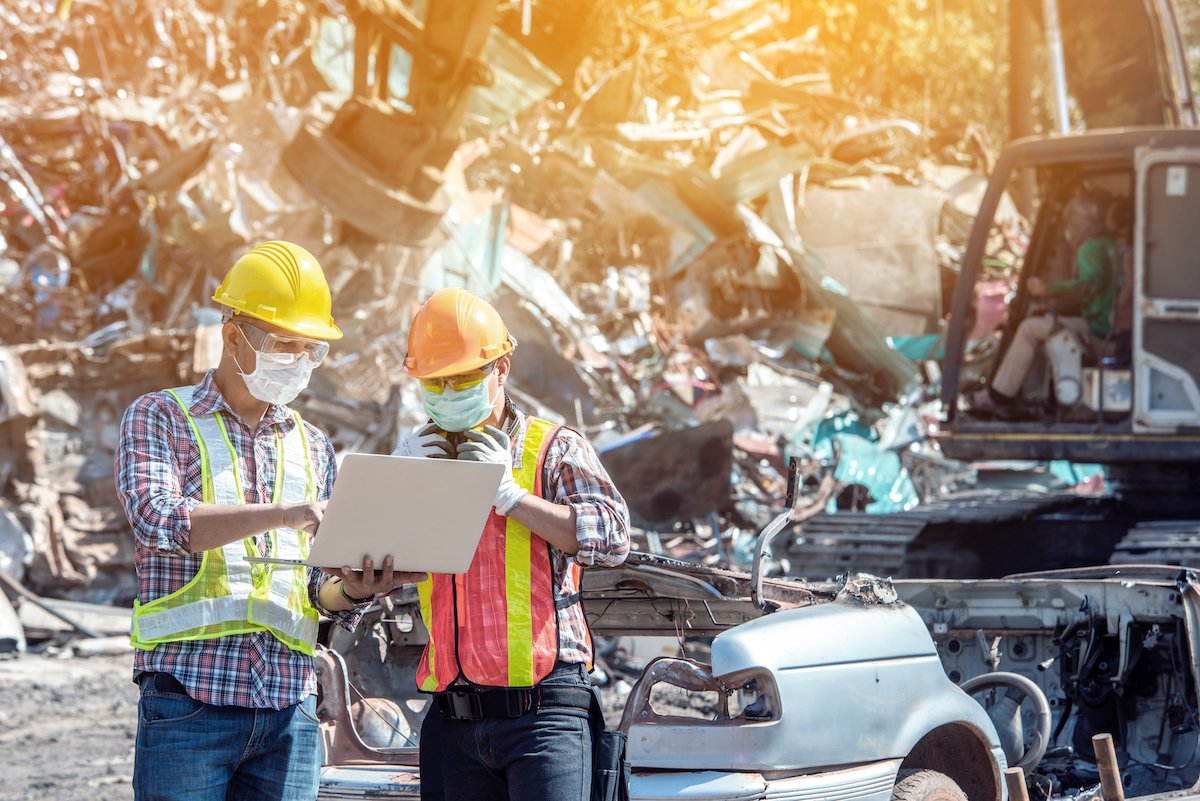Mismanagement of waste has a significant destructive impact on the environment and human health. This is directly related to costs of addressing the impact and therefore the effective waste management systems make sense not only from ecological but also economical point of view. Also, proper waste management systems are essential to building a circular economy, in which products are designed and optimized for reuse and recycling.
For garbage recycling it is crucial to properly sort and process the collected waste. The trash should be categorized and segregated into different types and materials, such as paper, metal or glass and then can be processed for re-use in the industry. Until recently, garbage sorting was usually performed by humans – both on the individual domestic level as well as at garbage collecting facilities. This process is costly and ineffective, as very often people do not bother to properly sort the garbage, or even if they do, they do not recognize which bin things should go to. And this is where the technology comes with help.

Waste management can be supported by AI algorithms in many ways. Among other applications, Computer Vision – based garbage sorting has the potential to truly revolutionize the industry and transform our environment.
Such intelligent systems can be installed either at the garbage collection spots or at points of disposal. Equipped with cameras, the smart sorting assistants can monitor the incoming trash and analyze the content of the images. The AI-powered algorithms can classify the garbage into multiple predefined categories.
Even with a 90% classification accuracy the system exceeds the observed human performance. This way the technology can correct human shortcomings in sorting. What is more, AI-driven robots are able to run for hours at a constant speed, allowing waste to be sorted for longer periods of time and at a larger scale.
Apart from direct application as garbage sorting assistants, the smart systems can provide additional value. The data acquired at a given garbage collection spot or point of disposal can drive effective waste management in many ways. For example, the distribution of waste of various sorts, each sort with other destination points of disposal, could be used for planning and optimizing the garbage collector routes. This kind of information can also be used to target the local society with adequate campaigns promoting proper waste management and environmentally friendly behavior.
Another application are the automated waste audits for property managers or trash collecting companies.
Adequate monitoring tools are crucial for the efficient recycling process imposed by the Zero Waste policy. While the manual inspection of waste quality and type is costly and concerns only samples, the intelligent trash bots can provide this information on a regular basis at no additional cost. Furthermore, such systems can trigger the trash-bin fullness alerts at a real-time, and in this way can help to manage the garbage collecting plans.This in turn can save the fuel and work expenses for routes that include only half-filled bins.

Computer vision systems can guide robotic arms or conveyor belts to sort and segregate waste based on its classification. For example, if the waste is classified as plastic, the system can direct it to the appropriate recycling bin or processing station. These types of systems enable robots to effectively grab and manipulate waste. Using visual cues such as size, shape and orientation, the robots can determine a good way to lift and move each object. This helps prevent damage to waste and ensures efficient sorting.
Using computer vision cameras, we can continuously monitor the waste sorting process. This provides real-time feedback to the robots, allowing them to adjust their actions based on changing waste composition or environmental conditions. Computer vision acts as a central element for integrating and coordinating the activities of multiple robots in a waste sorting plant. By providing a common perception of the environment, the vision system enables robots to work together, preventing collisions and ensuring efficient use of resources.
By combining computer vision with robotic automation, waste sorting processes can be streamlined, made more efficient, and reduce the reliance on manual labor. This technology enables higher accuracy, increased throughput, and improved overall performance in waste sorting facilities.
Annotating data for computer vision in waste management typically involves labeling or marking specific objects or regions of interest within an image or video. This process helps train machine learning models to recognize and classify different waste items, facilitating automated waste sorting and management. Similarly to the other annotations you have to follow few steps that help you train your models effectively later on.
Define annotation categories: Determine the specific waste items or classes you want to detect and classify in your waste management system. This could include categories such as plastic bottles, aluminum cans, paper, glass, organic waste, etc.
Collect representative data: Gather a diverse dataset of images or videos that encompass the waste items you want to annotate. You can acquire this data through various means, such as capturing images or videos using a camera, searching for relevant images online, or collaborating with waste management organizations.
Refine and validate annotations: Review the annotated bounding boxes to ensure accuracy and consistency. Check for any missed or incorrectly annotated instances. Iteratively refine the annotations until you achieve high-quality annotations for your waste items.
Create a balanced dataset: Ensure that your dataset is balanced, meaning it contains a sufficient number of samples for each waste category. An imbalanced dataset may lead to biased training and lower accuracy in waste item detection.